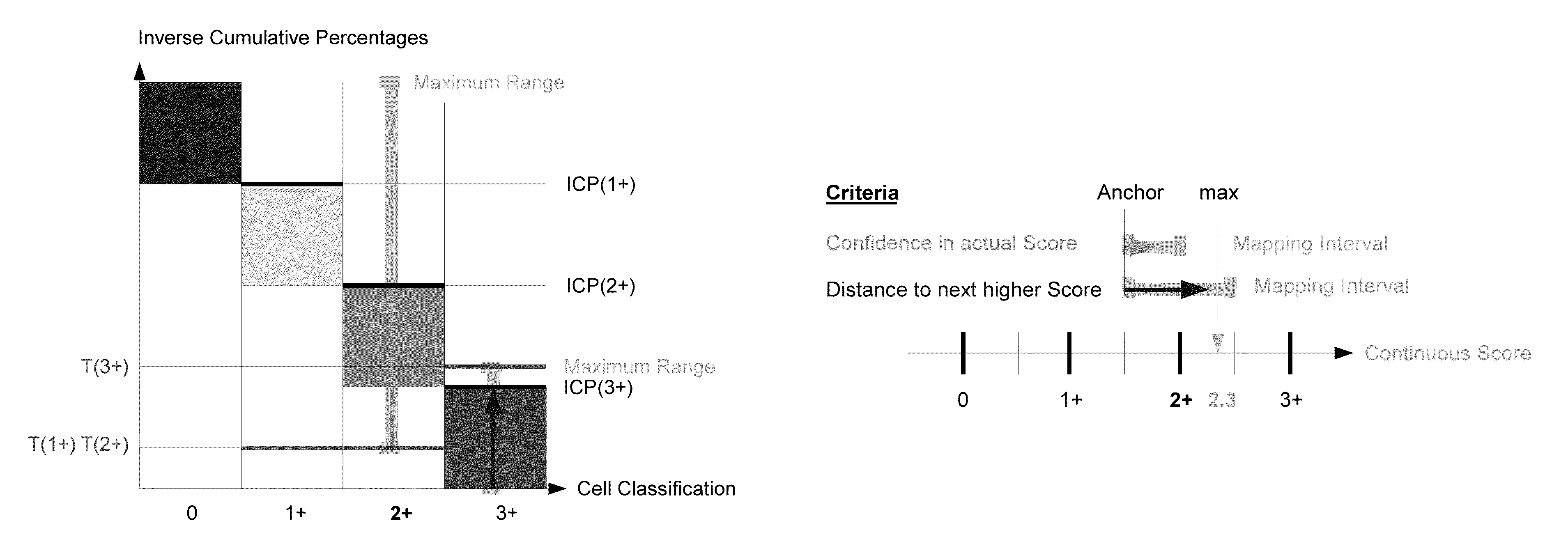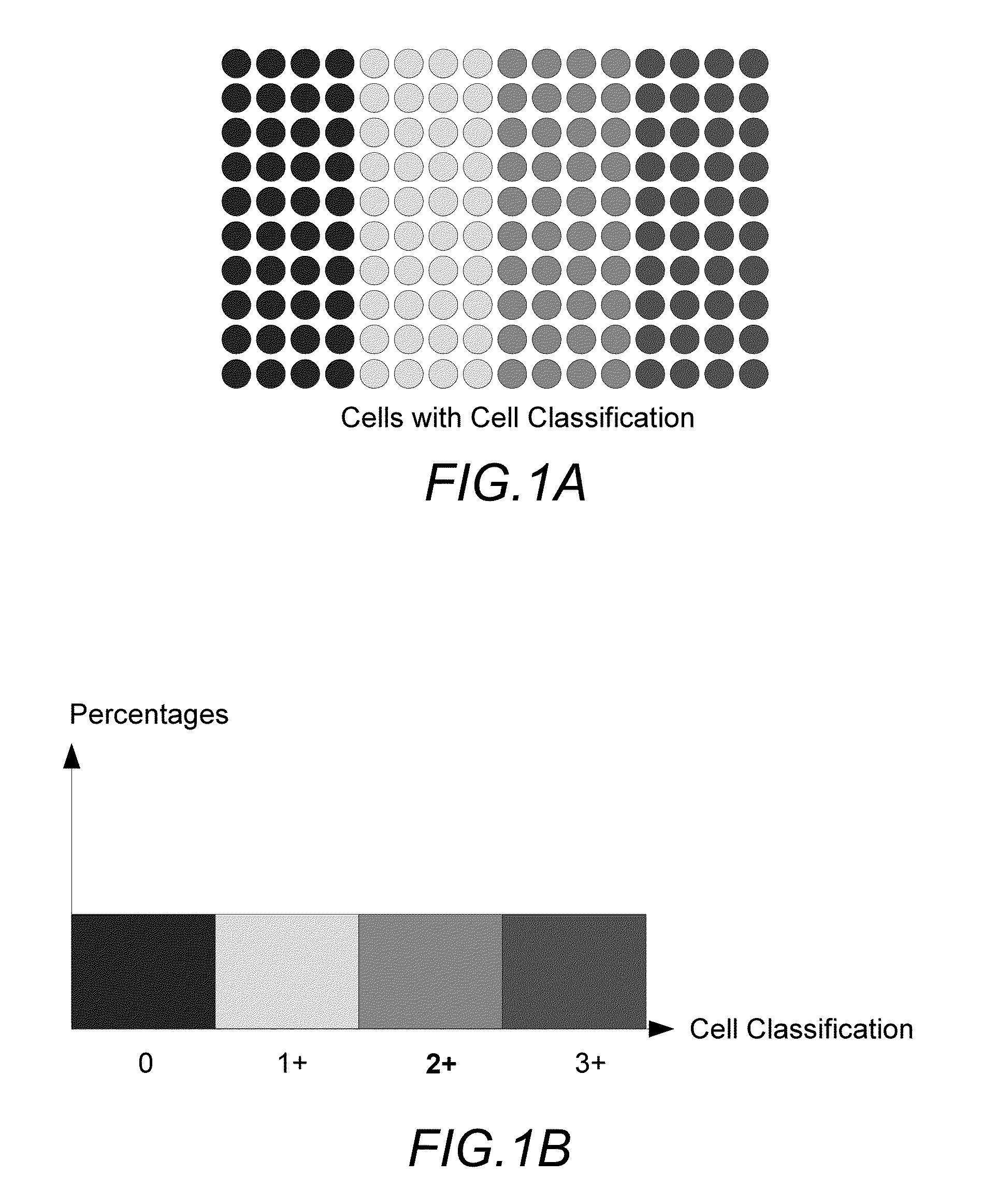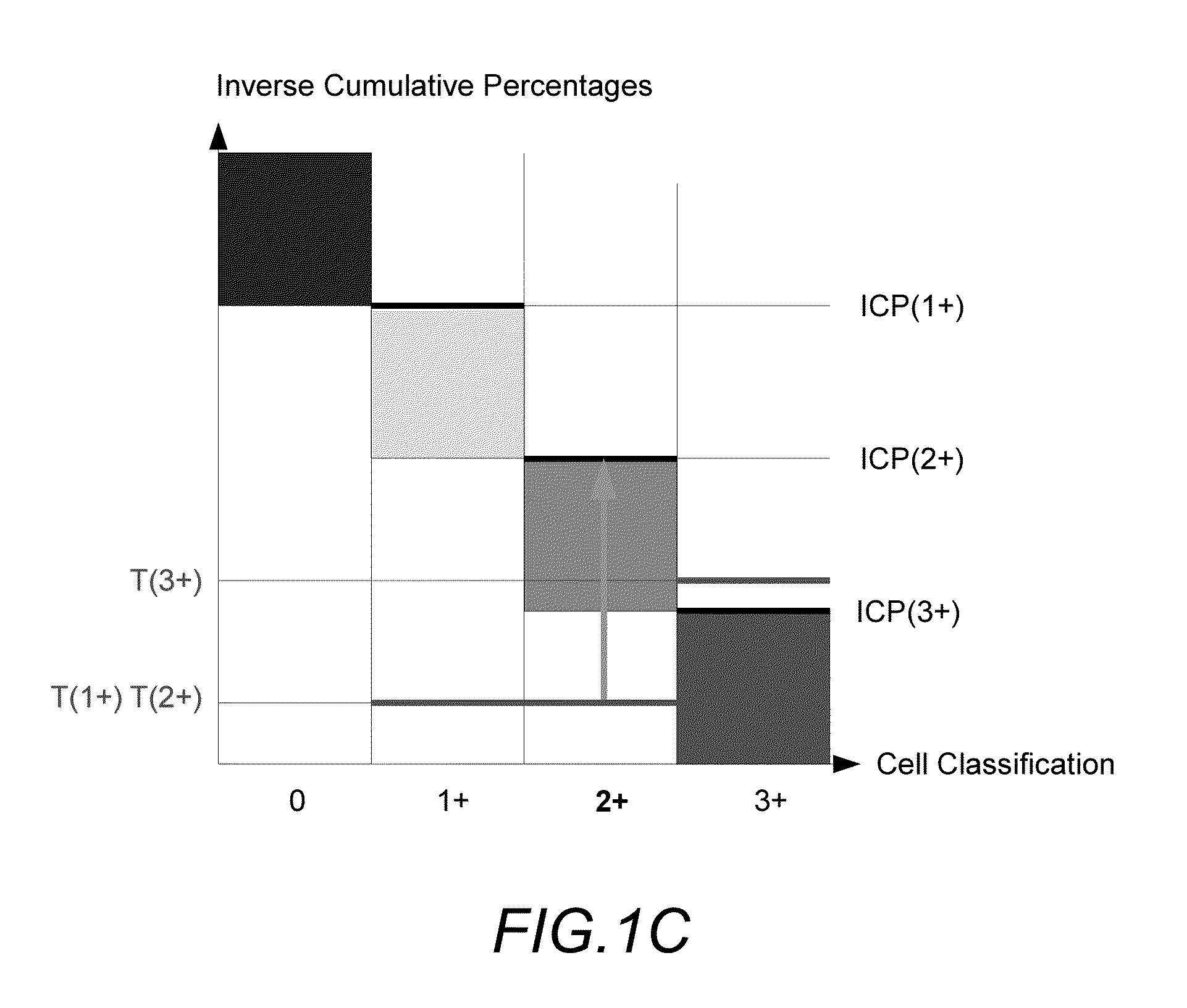Continuous tissue analysis scoring scheme based on cell classifications
a tissue analysis and classification technology, applied in the field of medical imaging, can solve the problems of limited complexity and required precision, difficult to identify borderline cases, and limited type of scoring, and achieve the effect of lack of precision and accuracy
- Summary
- Abstract
- Description
- Claims
- Application Information
AI Technical Summary
Benefits of technology
Problems solved by technology
Method used
Image
Examples
Embodiment Construction
[0035]A key aspect to creating a continuous scoring scheme is to use or create a discrete scoring scheme and to provide a formula that provides the continuous values between the discrete scores.
[0036]One type of a discrete scoring scheme is based on a classification of the cells into a number of ranked categories. The cells are counted per cell classification category and a discrete ranked score is determined by applying thresholds to the percentages of cells in those cell classification categories.
[0037]The cell classification can be based on a single cell feature (e.g. nuclei staining intensity) or multiple cell features (e.g. membrane staining intensity and membrane completeness) depending on the application. Sophisticated image analysis programs allow characterizing multiple cell features at the same time and even to multiplex cell features across different tissue sections. Any of those cell features, including a characterization of the cell morphology, cell neighborhood, which ...
PUM
 Login to View More
Login to View More Abstract
Description
Claims
Application Information
 Login to View More
Login to View More - R&D
- Intellectual Property
- Life Sciences
- Materials
- Tech Scout
- Unparalleled Data Quality
- Higher Quality Content
- 60% Fewer Hallucinations
Browse by: Latest US Patents, China's latest patents, Technical Efficacy Thesaurus, Application Domain, Technology Topic, Popular Technical Reports.
© 2025 PatSnap. All rights reserved.Legal|Privacy policy|Modern Slavery Act Transparency Statement|Sitemap|About US| Contact US: help@patsnap.com



